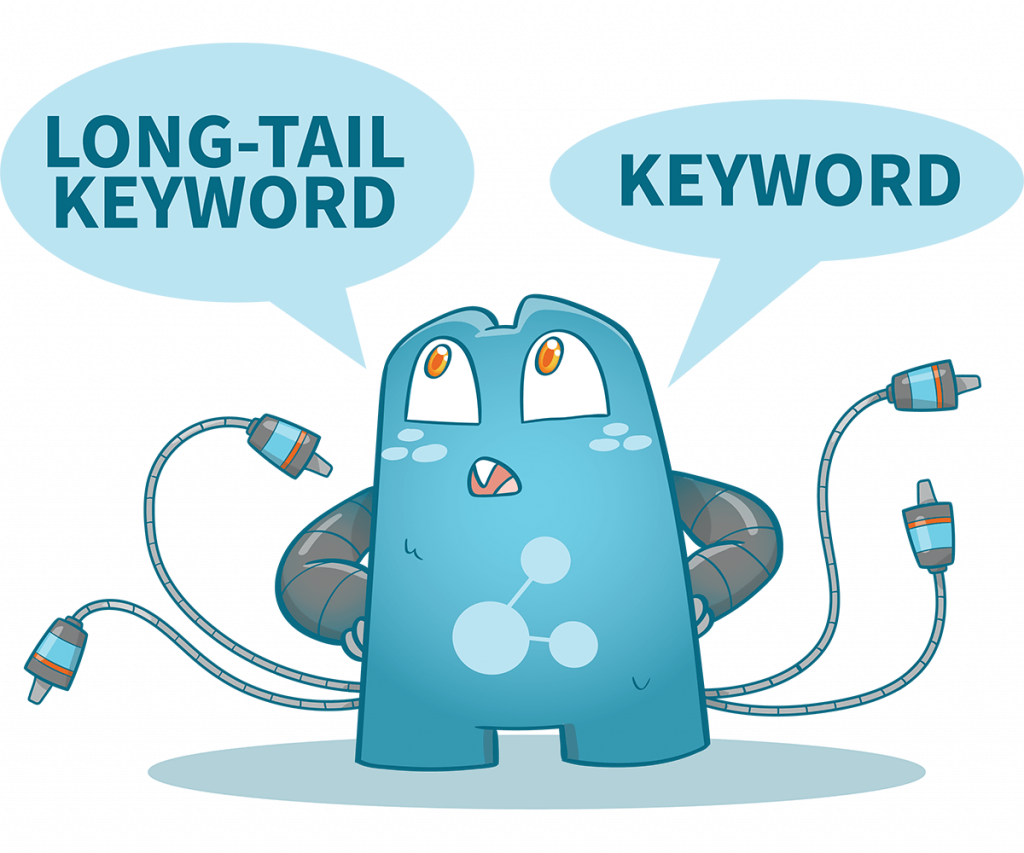Long-tail Keywords: Strategies and Tips in Using Them

There are a lot of myths and misconceptions when it comes to long-tail keywords. A lot of people think that they’re not worth targeting because they get less traffic than shorter, more general keywords. But the truth is, long-tail keywords can be extremely valuable to your website and your SEO strategy.
Long-Tail Keywords: A Quick Overview
Long-tail keywords are, simply put, longer and more specific keywords that are less common than shorter, more general keywords. They’re usually made up of three or more words, and they’re often very specific to a particular product, service, or niche market.
For example, “running shoes for men” is a long-tail keyword. It’s much more specific than just “running shoes,” and it’s much less competitive than a shorter, more general keyword like “shoes.”
What Makes a Good Long-Tail Keyword?
There are a few things that make a good long-tail keyword:
Relevant to Your Product, Service, or Niche
A good long-tail keyword should be relevant to your product, service, or niche. It should be a keyword that you would actually want to rank for.
For example, if you sell running shoes, you would want to target keywords like “running shoes for men,” “women’s running shoes,” or “best running shoes.” These are all relevant keywords that are likely to result in conversions.
Low Competition
Another important factor to consider when choosing a long-tail keyword is the level of competition. You want to choose a keyword that isn’t too difficult to rank for, but also one that isn’t so easy that everyone is targeting it.
A good way to gauge the competition level of a keyword is to use Google’s Keyword Planner tool. Just enter your keyword into the tool and it will tell you the approximate monthly search volume as well as the level of competition.
High Search Volume
Of course, you also want to choose a keyword with a high enough search volume to be worth your while. There’s no use in ranking for a keyword that no one is searching for.
Again, Google’s Keyword Planner tool can help you with this. Just enter your keyword into the tool, and it will tell you the approximate monthly search volume.
Importance of Long-Tail Keywords
A lot of people don’t know why long-tail keywords are important. Here is a list to help you better understand this concept:
Less Competition
Long-tail keywords are important because they have less competition. When you’re targeting shorter, more general keywords, you’re competing with a lot of other websites and businesses for those same keywords. But when you target long-tail keywords, the playing field is a lot more level.
More Specific
Long-tail keywords are also important because they’re more specific. This means that when someone searches for a long-tail keyword, they know exactly what they’re looking for. They’re not just browsing; they’re ready to buy. And if you can target these keywords and get your website in front of those searchers, you’re more likely to make a sale.
Better Quality Traffic
Long-tail keywords are important because they attract better quality traffic. This is the kind of traffic that’s more likely to convert into paying customers. When someone searches for a long-tail keyword, they know exactly what they want, and they’re more likely to find what they’re looking for on your website.
Helps You Target a Specific Niche
Long-tail keywords are important because they help you target a specific niche. If you’re targeting shorter, more general keywords, you’re not going to be able to reach a specific audience. But if you target long-tail keywords, you can really hone in on your target market.
Rank for Multiple Keywords Easily
You can easily rank for multiple keywords with just one piece of content by targeting long-tail keywords. For example, if you have a blog post about “running shoes for men,” you could rank for that exact keyword, as well as variations like “men’s running shoes” and “best running shoes for men.”

So, you might still be wondering why long-tail keywords are useful. Here’s an example for you:
Suppose I am looking for an iPhone case. I might search for “iPhone case” or “phone cases.” But if I’m looking for a specific type of iPhone case, like an Otterbox case, I’m going to use a long-tail keyword like “Otterbox Commuter Series Case for iPhone.”
Notice how much more specific the long-tail keyword is. When I use that keyword, I know exactly what I’m looking for. And chances are, if someone is searching for that specific keyword, they’re ready to buy.
Do’s and Don’ts of Using Long-Tail Keywords
When it comes to using long-tail keywords, there are a few things you should do, and a few things you shouldn’t do.
Here are some dos and don’ts to help you use long-tail keywords effectively:
Dos when Using Long-Tail Keywords:
- Research your keywords thoroughly
Make sure you’re targeting the right keywords for your business. Don’t just choose any old keyword; make sure it’s relevant to your products or services, and make sure there’s enough search volume to make it worth your while.
Use keyword research tools like Google AdWords Keyword Planner and Moz Keyword Explorer to find the right keywords for your business.
- Create quality content
Once you’ve chosen your keywords, it’s important to create quality content that targets those keywords. Write helpful, informative articles that use your keywords naturally, and make sure your website is easy to navigate and full of helpful information.
- Add new content regularly
It’s not enough to create quality content once; you need to keep adding new content on a regular basis. This will help you attract more traffic and keep people coming back for more.
- Use search intent to your advantage
Search intent is the main reason people use long-tail keywords. Keep this in mind when creating your content, and make sure you’re providing the information that searchers are looking for.
Don’ts when Using Long-Tail Keywords:
- Don’t stuff your keywords
Keyword stuffing is when you cram as many keywords into your content as possible, regardless of whether it makes sense or not. This doesn’t do anything for your SEO; in fact, it can actually harm your ranking. So don’t do it!
- Don’t neglect other aspects of SEO
Just because you’re focusing on long-tail keywords doesn’t mean you can neglect other aspects of SEO. Make sure you’re still doing things like optimizing your titles and descriptions, and building backlinks to your website.
- Don’t forget about your customers
Remember, at the end of the day, you’re creating content for real people, not just search engines. So don’t forget about your customers! Write helpful, informative content that will actually be useful to them.
- Don’t pick long-tail keywords with too much competition
The purpose of picking long-tail keywords is to avoid competition. So don’t pick keywords that are too popular; otherwise, you’ll just be competing with everyone else.
Strategies when Using Long-Tail Keywords
Now that we’ve gone over the dos and don’ts of using long-tail keywords, let’s talk about some strategies you can use to make the most of them.
Here are a few tips for using long-tail keywords:
Use them in your titles and descriptions
One of the best places to use long-tail keywords is in your titles and descriptions. This will help you rank higher in search results, and it will also help people find your content more easily.
The reason behind this is that when people are searching for something, they’re more likely to click on a result that includes their keywords in the title or description.
Use them throughout your content
Don’t just stuff your keywords into your titles and descriptions; use them throughout your content as well. Use them in the body of your articles, in the alt text of your images, and your website’s navigation.
This is important since it will allow you to rank for a wider range of keywords, and it will also help your website’s visitors to find the information they’re looking for more easily.
Use them in your backlinks
In addition to using long-tail keywords in your own website’s content, you can also use them when linking to other websites. For example, if you’re writing an article about dog food, you could link to a website that sells dog food using the keywords “buy dog food.”
This is a great way to get more backlinks to your website, and it will also help you rank higher for those keywords.
Use them in your PPC campaigns
PPC campaigns are a great way to get more traffic to your website, and they’re also a great way to use long-tail keywords.
If you’re running a pay-per-click (PPC) campaign, long-tail keywords can be a great way to get more bang for your buck. They’re usually cheaper than short-tail keywords, and they can help you target specific niches.

When you create a PPC campaign, make sure to include your long-tail keywords in the ad copy. This will help you attract more clicks, and it will also help you improve your Quality Score.
Use them in your social media campaigns
Long-tail keywords can also be useful in social media campaigns. Use them in your posts and tweets to reach a specific audience, and use them to create targeted ads on social media sites like Facebook and Twitter.
You need to do this to get more likes, shares, and comments on your social media posts. Also, using long-tail keywords in your social media campaigns can help you reach a wider audience.
A Final Word on Long-Tail Keywords
Long-tail keywords are a great way to improve your SEO, and they’re also a great way to reach a specific audience.
Use them in your titles and descriptions, throughout your content, and in your backlinks. You can also use them in social media campaigns, and you can use them to create targeted ads on social media sites.
Just remember to avoid competition, and to focus on creating helpful, informative content that will be useful to your website’s visitors.
If you follow these tips, you’ll be able to make the most of long-tail keywords and improve your website’s traffic.
Do you want to link together pages with relevant long-tail keywords? Check out the Internal Link Juicer now to automate this process!






